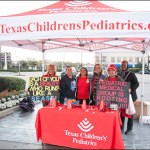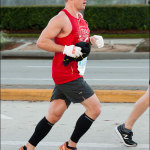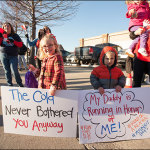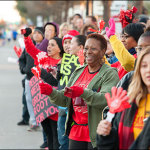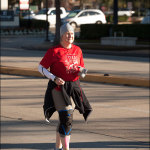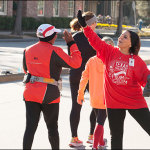When two patient families came through the Texas Children’s doors looking lost and confused, Feba Payne from Facilities wanted to help. Neither family spoke English, but Payne wasn’t about to point them in the direction of their clinics and leave them to figure out the rest on their own. She stopped what she was doing in the lobby and personally accompanied each family through the hospital to their appointments.
Every day at Texas Children’s, people like Payne take time to make a difference. Whether for our patients or colleagues, these small acts often determine the experience we create. Payne’s kindness not only made the stressful time less difficult for the families, but also caught the attention of one of her team members who shared the story on a Caught You Caring card. With the launch of Caught You Caring, Texas Children’s aims to recognize the work we all do to make a difference.
Caught You Caring is an organization-wide initiative to recognize those every day acts of compassion. The program began in ambulatory surgery and has been incredibly successful among staff and physicians, recognizing hundreds who have gone above and beyond.
“It’s so easy to tell stories or complain about what went wrong,” said Erica Diaz, a child life specialist. “We thought maybe a way to change our culture is to change our conversation.”
Patients, families and employees are encouraged to catch someone who is making a difference. Boxes and cards will be placed throughout all Texas Children’s sites for patients and families to recognize staff. Employees can fill out a Caught You Caring form on Connect. Cards and online submissions will be distributed to leaders for staff recognition.
“I’ve had a chance to write a lot of thank you cards to the recipients of Caught You Caring and I can’t tell you how surprised these individuals are, how happy they are, and that has a ripple effect on those around them,” said Chief of Plastic Surgery Dr. Larry Hollier.
Join the Caught You Caring launch events at Main Campus from 10 a.m. to 1 p.m. Wednesday, January 27 on The Auxiliary Bridge, and from 10 a.m. to 1 p.m. Thursday, January 28 at West Campus on the first floor near the cafeteria.
Will you get caught caring?






